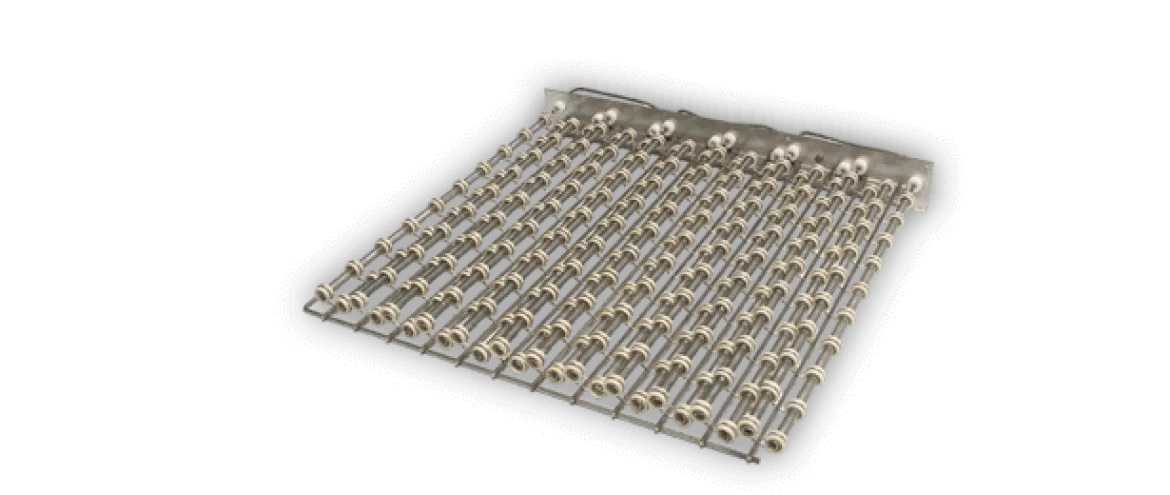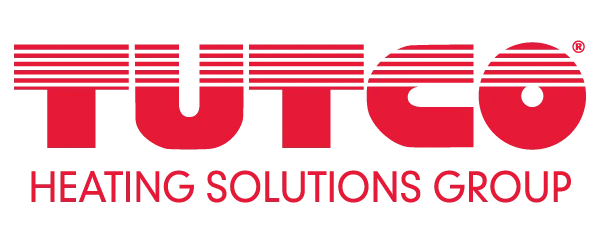Duct Heaters Overview
Definition
As the name implies, duct heaters are generally designed to be installed into ducting. They are usually installed through the side wall to cause the air in the duct to be heated as it flows around and through the open-coil elements.
Duct heaters made by TUTCO-Farnam are not for HVAC use. They are for industrial type applications and are not built to the standards required for the typical residential HVAC. For HVAC applications go to www.tutco.com/duct-heaters/.
Sizes and Shapes
At TUTCO-Farnam the standard shape is square, but rectangular duct heaters are common as custom-built units. Round duct heaters are also possible for unique applications.
Our pre-designed square duct heaters are offered in 6”, 12”, 22” & 36” sizes.
Circuit Types
Single-phase and three-phase duct heaters are available in voltages up to 600V.
We make individual duct heaters from less than 1kW up to 75kW.
A duct heater may be configured in stages, if desired. Each stage is a ‘stand-alone’ circuit. Multiple stages may be used for different reasons via a dual controller, if desired.
- Each stage may be powered up separately to achieve various levels of heat output.
- Each stage may be wired independently to minimize the amp load, which allows smaller gauge cables. They may still be operated in unison.
Watt Density
Watt Density of the heater coil is the watts per square inch of the surface area of the coil wire.
Watt density is not normally specified by the user, however, one may specify a ‘not to exceed’ limit on the watt density. Watt density can range as high as 90 W/In² but lower numbers are preferred. A watt density of 50 W/In² is very conservative. Generally, the life of the coil is shortened as the watt density increases.
Min/Max Flow Rates
The minimum and maximum flow rates are calculations based on the velocity of the air and the area of the duct.
We suggest a minimum of 200 fpm of air flow, but more is better, if possible. Without adequate airflow most duct heaters are apt to fail due to coil overheating and result in breakage.
The airflow is required to keep the coils from overheating.
We suggest a maximum of 7000 fpm of air flow, primarily to avoid deflection of the coils due to the ‘wind resistance’. Of course, a light gauge coil is much more susceptible to deflection than a heavy gauge coil would be. Light gauge coils are avoided whenever possible for this reason.
Installation Concerns
The primary concern with installation of a duct heater is the orientation of the heater with respect to the axis of the coils. The coil axis must be horizontal. That means the termination plate (face, or front) of the heater is mounted to a vertical side of the duct.
Horizontal mounting assures the coils are adequately supported by the ceramic bushings. If the heater were to be mounted vertically, the coils could sag down to the point of shorting the coil wraps together. They could also drop out of the “bottom” bushing and short to the ducting.
Should the application require multiple heaters, avoid mounting them closely side-by-side. Instead, leave at least a few inches between them. This allows the air to mix or blend before it encounters the next bank of heater coils.
When a thermocouple is to be mounted downstream, it should be mounted away from the heater for the same reasons as above. Thermocouples should also be long enough to reach well into the duct, away from the less-mixed (and cooler) air near the walls.
Summary
Your TUTCO-Farnam duct heater will have a long life when it’s properly installed and operated.

